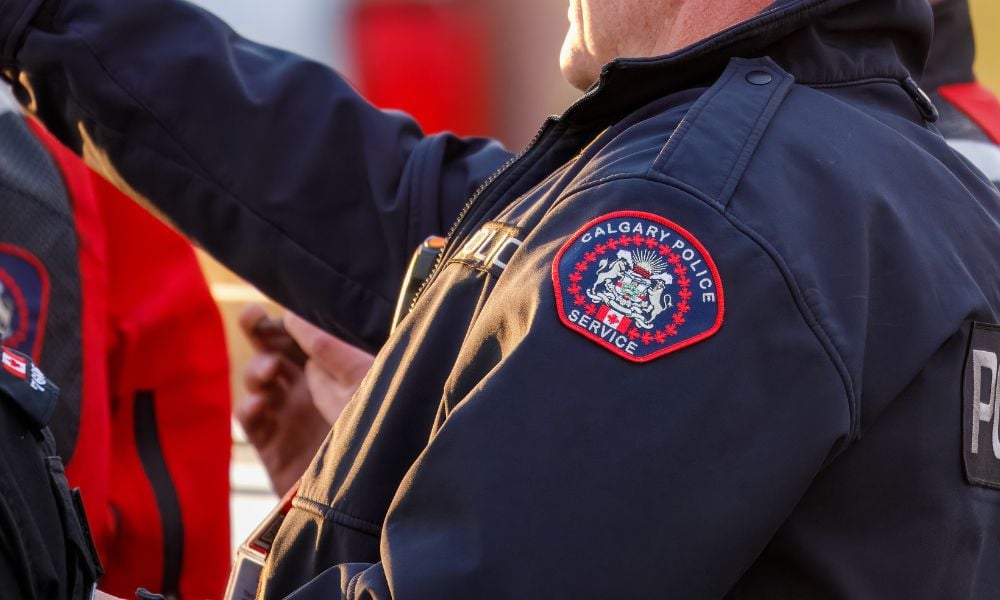The best safety boots for winter differ in design, insulation, and durability. Here’s a guide on how to choose the right winter work boots for your team.
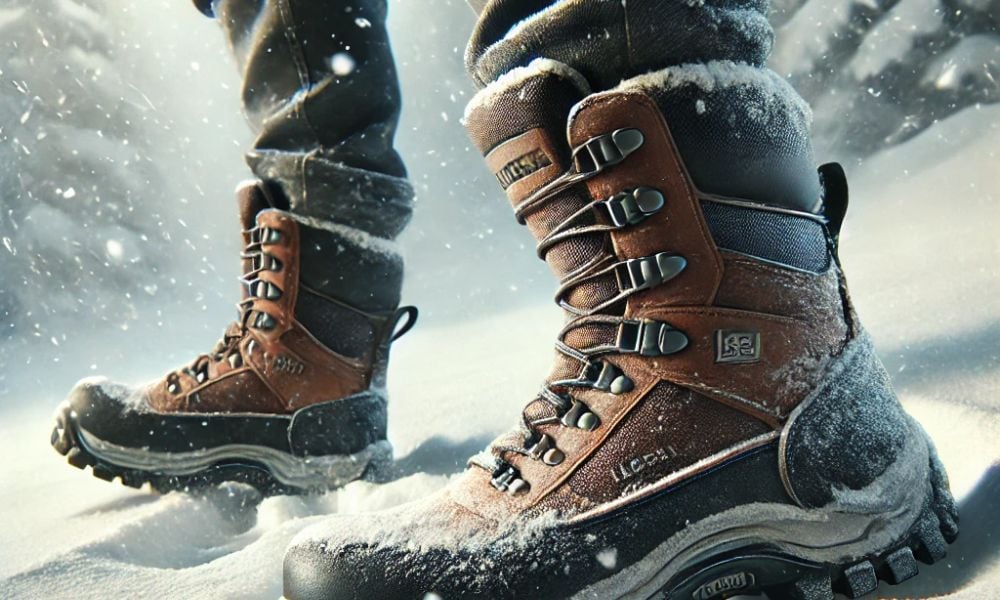
If your company engages in an industry that exposes staff to cold environments, it’s only logical to outfit them with the best equipment that will help them stay warm as they work. Apart from cold weather gloves, jackets or parkas, they will need the best cold environment boots or winter work boots.
Depending on your industry and the nature of the work, your staff will need winter work boots to protect against extreme cold, along with impact or cut protection. As you search for the best safety boots for winter work for your workforce, it helps to consider their safety needs.
Don’t just choose any pair of winter work boots that are CSA-approved but consider the safety hazards at their worksite and the number of hours they’ll work there. Factoring in the temperature and moisture levels your staff must deal is also essential.
Use this guide from Canadian Occupational Safety to make the task of finding the best safety boots for winter or extreme cold for your workforce easier.
Key features to look for in winter safety boots
When looking for the best safety boots for winter or working in extremely cold conditions, it’s important to consider features that provide the optimum combination of warmth, comfort, and protection. Here are some important features to look for:
1. Insulation
The primary function of winter work boots is to keep their users’ feet warm and comfortable. The insulative material of the boots you choose should be thick enough to keep feet warm and blood flowing freely. If a worker’s feet get cold, the blood vessels can contract and make it harder for the rest of their body to maintain a comfortable temperature.
Types of insulating materials
Some of the best safety boots for winter made in previous years had real fur or faux fur as their insulating material. Today, many of the more popular brands use patented materials for insulation. Here are some of the insulating materials you may see on some of the best winter safety boots:
Thinsulate
This is a synthetic material made by 3M. It’s composed of very tiny fibres that trap warm air while keeping cold air out. The best part about Thinsulate is that it provides warmth without needing several layers that can make the boot bulky, unlike real or faux fur.
Another great feature of this material is that as a boot lining it can be very durable and doesn’t get worn from regular use or frequent cleaning. And as its name suggests, Thinsulate provides a high degree of insulation even in cold and wet conditions.
Shearling
This is a more natural lining material, as it’s made of a combination of wool and leather. Shearling is a fleece-like lining material that can keep your feet warm but can be a lot thicker than other types of linings. While this material has natural water-repelling qualities, it may not be as waterproof in heavy snowfall.
Primaloft
This is another synthetic insulating material that is made of nylon and polyester fibres. What’s unique about Primaloft is that it mimics the insulating properties of soft, thin down typically found in fleece.
2. Waterproofing
Besides protection from the cold via insulation, your workers will need the best safety boots for winter that also protect them from water and moisture. If any water or moisture gets into your staff members’ feet, they are at risk of getting serious injuries like non-freezing cold injuries (NFCIs). NFCI is the modern term for trench foot – a condition that afflicted many soldiers in the trenches of WW1 or the jungles of the Vietnam War.
Waterproof boots are essential for workers, because if water or moisture manages to penetrate, the worker’s feet can become waterlogged. If the worker doesn’t change their socks and footwear for hours, their feet can become blistered, torn, or cracked causing immense pain and impairing mobility.
Choose a winter work boot that not only has an insulative lining, but a waterproof lining or membrane as well.
3. Additional safety features
Working in industries like mining or construction can involve a lot of heavy equipment and materials that can raise the risk of injury. That’s why the safety features are another important aspect of choosing the best safety boots for winter.
Typically, you will have to pick from winter safety boots that are steel-toed or have composite safety toes. These types of boots can protect against injuries caused by heavy material or tools that may accidentally fall on their feet. Just remember that these safety features cannot shield workers against injuries entirely but are meant to minimize the potential damage or injury to their feet.
4. Insoles and lining for insulation
The right pair of winter safety boots must also have the correct type of insulating lining and insoles. There are insulating insoles and linings that can be purchased separately and installed into work boots, but these may not be cost efficient or convenient. Separate linings or insoles can be lost or misplaced. Purchasing winter work boots with insulating insoles and linings sewn into them is preferable.
5. Sizes and fit
Be sure to check that the winter safety boots you are considering can be had in the right sizes and will fit your workers. Find out if there are wide-fitting options to account for thick socks or long johns that your workers will wear.
It’s crucial for the boots to fit perfectly, as boots that are too small can pinch and crimp the feet, making it uncomfortable or painful to move and work. Avoid getting boots that are too big as well, since your workers’ feet can move around too much and easily cause them to slip and fall. When choosing between laced boots or slip-ons, opt for the more practical and safer choice for the worksite.
6. Durable construction
When choosing the best safety boots for winter, consider those that are built to last. A good winter work boot should last through one to three winters. After that, pairs should be replaced with new ones as worn winter boots can have their soles worn out and become slippery.
Check also the insoles and soles of the boot – choose a work boot that is stitched instead of glued together. While winter safety boots with stitched soles can be more costly, they are more durable and won’t come apart as easily as glued soles. Compared to glued soles, stitched soles also offer a better waterproof seal, ensuring that no water or moisture seeps in.
7. Traction and slip resistance
Finally, the winter work boots that suit your workers’ needs must provide excellent traction. Work boots with thick rubber soles are preferred as these are more slip resistant. Traction is especially important if your workers are doing their jobs in icy or snowy conditions.
Safety ratings for winter work boots and their meanings
Every piece of safety equipment in your workers’ kit will have different kinds of ratings. Safety ratings on boots are vital, since they indicate the level of protection the footwear provides against workplace injuries or hazards.
In your search for the best safety boots for winter, always refer to their safety ratings. These are indicators of how well the work boots hold up against impact forces, cutting forces, fire or other hazards.
How do you know which boot with which safety ratings will work? Consider the hazards your staff will face in the workplace and the number of hours they’ll be working every day. It also might help to consult senior staff, since they’ll likely have firsthand experience with some brands and models.
Here are the safety ratings and their meanings:
- SB or Safety Basic: SB is the most basic safety rating for boots. An SB rating means that the boots have steel toe caps, which can resist impact forces of up to 200 joules.
- S1: An S1-rated boot has the standard SB-rated 200-joule toe caps, along with added resistance to fuel and oil. This also means the boots have an energy-absorbing feature in the heel.
- S2: The S2 has all the features of S1 with the addition of a water-resistant, presumably leather upper.
- S3: These boots have the 200-joule toe cap with the S2 boot feature, but with added penetration resistance. The penetration resistance is provided by either a stainless steel or aluminium insert in the sole or by a Kevlar sole.
- S4: The S4 boot has all the properties of the S1-rated boot but is completely waterproof.
- S5: An S5 boot is the highest safety rating, with the features of the S4 boot combined with the penetration resistance of the S3-rated boots. The penetration resistance is likewise provided by a stainless steel or aluminium insert in the sole or a Kevlar sole.
Why choose the right winter work boot
We live in a world where workplace safety is a priority, so that’s why you will have to pore through a lot of different catalogues and websites to find the best safety boots for winter.
Aside from helping your staff keep warm at their worksite and avoid nasty injuries like NFCI or the infamous frostbite, there are other valid reasons for getting the best winter boots you can afford.
Cold feet can hamper productivity
As serious as NFCIs and frostbite are, the most important point about giving your staff winter work boots is to help them avoid getting cold feet. Getting cold feet or cold hands can reduce productivity because people must exert more effort to stay warm. This can mean more coffee breaks or tobacco breaks, huddling close to heaters more often – basically not getting any work done.
Cold feet can cause accidents
Feeling too cold can also be dangerous. One study from Cornell University confirmed that workers have a 44% chance of committing errors at work when it’s too cold (68°C or 20°F or lower). Safety errors caused by cold weather isn't something you need, especially when working with or around heavy equipment.
For instance, if you’re in the construction business, think of your construction workers who operate cranes or large dump trucks. They’ll need the best safety boots for winter construction. If their feet get cold to the point of numbness, their coordination and reaction times become severely reduced.
Cold feet can mean not stepping on brake pedals in time, thereby causing costly injuries or damages.
So, as trivial as getting cold feet seems, they can be a costly accident waiting to happen.
The best safety boots for winter to recommend to your team
When looking for safety boots or any safety equipment that your workforce needs, you are sure to be overwhelmed with the huge variety and selection of products on the market.
To give you an idea of the sort of products you can find, here are some of the best safety boots for winter:
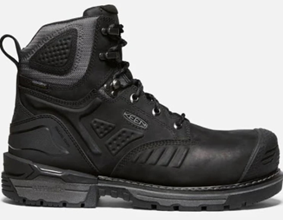
KEEN Utility Philadelphia work boot
This heavy-duty, insulated work boot for winter or frigid conditions can be an excellent piece of kit for your workforce. The Philadelphia is designed to keep your feet stable, warm, and protected.
The KEEN company proudly says that its ¾ Goodyear welt construction and 90° heel provide stability, flexibility, and durability under extreme working conditions. The boot has the 200g KEEN.WARM signature insulation for extra warmth in colder environments.
Other features of the Philadelphia model include Barnyard Resistant Leather, which protects against the corrosive effects of oleic acid, sodium chloride, and ammonium hydroxide for greater durability. The boot is also classified as Electric Shock Resistant (ESR) footwear, protecting the wearer from accidental contact with live electrical circuits.
Read more: Essential personal protective equipment for electrical workers
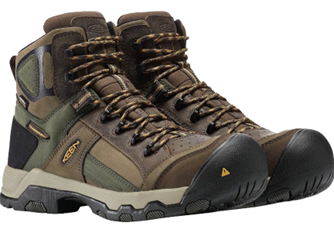
KEEN Utility Davenport medium-duty work boot
Another gem from KEEN Utility is the Davenport boot. A CSA-certified work boot, the Davenport features a waterproof membrane and excellent insulation for keeping feet warm and dry in the most extreme conditions. Not bad for a boot that only weighs 200g!
KEEN claims that this boot provides all-day comfort, thanks to its lightweight insulation and superior waterproofing, even in the harshest of conditions. The Davenport is of100% non-metallic construction, has a puncture-resistant midsole plate, and the patented Cleansport NXT for odor control.
Made from waterproof leather, the Davenport also offers an oil and slip-resistant non-marking rubber outsole, a moisture-wicking textile lining, and a comfortable, removable EVA footbed. These features make it among the best safety boot for winter jobs.
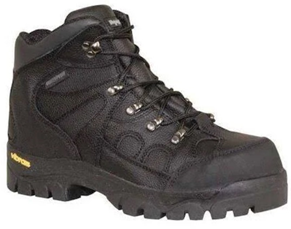
RefrigiWear EnduraMax boot
Since 1954, RefrigiWear has produced a wide range of PPEs to ensure that workers are safe, warm, and prepared. Their EnduraMax boot is testament to their company values, as it’s touted as their “ultimate companion for cold and challenging environments.” Featuring Thinsulate insulation and a waterproof leather upper, the EnduraMax does a fantastic job of shielding its wearer from freezing temperatures.
And with its Vibram New Bifida outsole with IceTrek traction system, this boot assures the wearer of excellent traction in most any type of terrain. Finally, the EnduraMax offers added protection from impact injury with its ASTM composite safety toe and rubber toe guard.
For a better idea of what other brands, styles and models that are out there, here’s a short video showcasing a few other brands of work boots for the cold. Just note that some of these boots are more suited to non-professionals who do light work around the house, so do your due diligence.
Choosing the best safety boots for winter
Finding the best winter safety boots for your staff can be a daunting task, but it’s well worth the effort, especially since equipment that protects against cuts, impact, or other injuries protects your bottom-line. Remember that it’s not just serious injuries and the medical costs that you want to avoid in winter by getting the best winter work boots, their use can also counter reduced productivity due to the cold.
Visit our Products Resources page to get more news and information about safety footwear in Canada. Be sure to bookmark this page for the latest industry updates.
Did you find this article on the best safety boots for winter helpful? Let us know in the comments.



